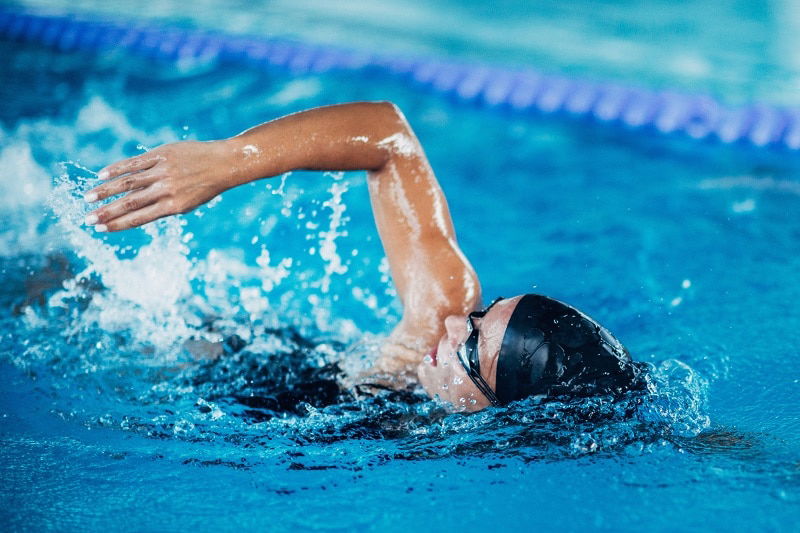We’ve all experienced it before: You get out of the pool, wrap up in a towel, and dry off, but you still have water in your ears. As much as you try to shake your head and get that pesky water out of your ears, it just won’t budge. Minutes and hours tick by, your ears are still full of water, and you start to wonder if this will ever go away.
The clogged-up feeling that we get when we have water in our ears is annoying, to say the least, but did you know that water in your ears can have nasty side effects beyond being a slight inconvenience?
Swimmer’s Ear And Your Hearing Health
Water in the ear can, and often, is harmless, as it can usually work its way out our noggins either with or without our help. But, when water gets trapped in the ear, it can cause a bacterial infection known as acute otitis externa or swimmer’s ear, which can cause long-term issues for your hearing health.
Generally speaking, swimmer’s ear happens because we get dirty, untreated water trapped into our ears. Water from lakes, rivers, oceans, or hot tubs all contains relatively high levels of bacteria, so water from these sources can be dangerous when stuck inside our ears.
When we get dirty water trapped in our ears, we can develop a skin infection because the inner ear is the perfect dark, moist, warm environment that bacteria love to grow in. If you’re lucky, swimmer’s ear results in some pain and irritation in the ear that goes away with little trouble. Other times, however, swimmer’s ear can spread, causing ear pain, ear pressure, redness, pus or fluid drainage, fever, and swelling of the lymph nodes.
In a worst-case scenario, we can even experience temporary or permanent hearing loss if the bacterial infection spreads to the sensitive organs of the inner ear and then to the base of the skull and the brain. The inner ear is particularly susceptible to damage from infection because the thousands of tiny hair cells that transmit sound waves to the brain are incredibly fragile, making them vulnerable to permanent damage.
When To Get Medical Care
Since swimmer’s ear can have irreversible life-long consequences, it’s important to know when to seek out qualified medical care for the condition. For the most part, we should seek out advanced medical care for swimmer’s ear when the condition progresses past a minor annoyance. Here are some signs and symptoms you might see in swimmer’s ear that should tell you to get help:
- Itching ears
- Pain while chewing
- Pain when tugging on the earlobe
- Decreased hearing abilities
- Muffled hearing
- A clogged sensation that doesn’t go away
If you or a loved one experience any of these symptoms, it’s best to get advice from a medical professional and seek treatment options when appropriate. Often, a hearing healthcare professional will be able to prescribe an antibiotic or antifungal eardrop to help clear up the infection.
Preventing Swimmer’s Ear
Swimmer’s ear is painful and potentially dangerous, so it’s in our best interest to avoid it whenever possible. Thankfully, there are a few different ways to prevent swimmer’s ear.
First and foremost, you can use earplugs or custom molded ear protection from your hearing healthcare professional to stop water from getting into your ear. If these aren’t available, or if water does get into your ear, you can try to drain the water from home. Here are some good methods to try if you have water clogging your ears:
- Pull on your earlobe. If water is stuck in your ear, you can try jiggling your ear to get the water out. Gently pull your ear while tilting your affected ear and head toward your shoulder.
- Use gravity. Often, the forces of gravity are enough to get water out of our ears. Lie down on your side with the affected ear facing downward. Place a towel under your ear and relax for a few minutes. Water will often start slowly draining from your ear, relieving the pressure.
- Try a hot compress. Wet a washcloth with hot (not scalding!) water and ring it out. Place the cloth on the outside of your ear and tilt your head toward the affected side for about thirty seconds. Remove the cloth for a minute and repeat the process four to five times to get the water out of your ear.




